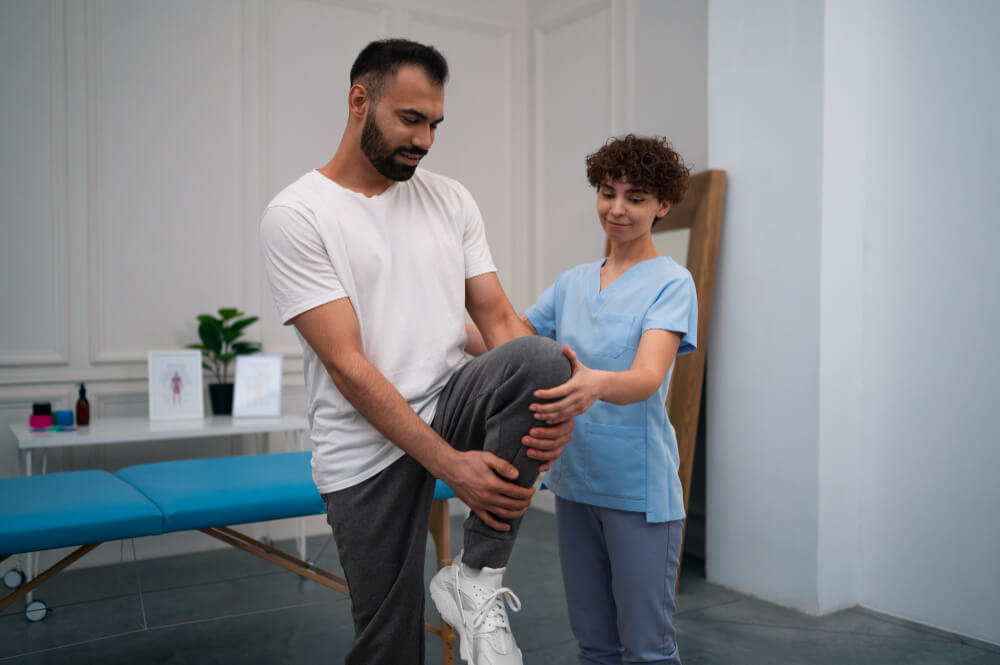Managing Joint Pain: A Comprehensive Guide
Joint pain is a prevalent health issue that affects people of all ages. It can range from mild discomfort to debilitating pain, limiting daily activities and overall well-being. Understanding the causes of joint pain, seeking appropriate diagnosis, and implementing effective treatment strategies are essential for managing this condition.
Common Causes of Joint Pain
Several factors can contribute to joint pain:
- Arthritis : Osteoarthritis, rheumatoid arthritis, and gout are common causes of joint pain.
- Injuries : Strains, sprains, fractures, and dislocations can damage joints.
- Overuse : Repetitive motions or excessive physical activity can lead to joint inflammation.
- Medical Conditions : Conditions like lupus, fibromyalgia, and thyroid disorders can cause joint pain.
Diagnosing Joint Pain
Accurate diagnosis is crucial for effective treatment:
- Medical History A detailed review of symptoms, onset, and severity of joint pain.
- Physical Examination Assessing joint tenderness, swelling, and range of motion.
- Imaging Tests X-rays, MRI, or ultrasound to visualize joint structures.
- Blood Tests Identifying underlying medical conditions that may contribute to joint pain.
Non-Surgical Treatment Options

Most cases of joint pain can be managed without surgery:
- Medications Over-the-counter pain relievers, prescription anti-inflammatory drugs, or corticosteroids.
- Physical Therapy Exercises to strengthen muscles, improve flexibility, and reduce pain.
- Occupational Therapy Adapting daily activities to minimize joint stress.
- Heat and Cold Therapy Applying heat or cold packs to relieve pain and inflammation.
- Weight Management Losing excess weight can reduce stress on joints.
- Assistive Devices Using canes, crutches, or braces to support joints.
Surgical Interventions
In severe cases, surgery may be considered:
- Joint Replacement Replacing damaged joints with artificial implants.
- Arthroscopic Surgery Minimally invasive surgery to repair damaged cartilage or remove bone spurs.
- Bone Fusion Joining two or more bones to stabilize a joint.
Complementary and Alternative Therapies
Some people find relief from joint pain through complementary approaches:
- Acupuncture Involves inserting thin needles into specific points on the body.
- Chiropractic Care Manual manipulation of the spine and joints.
- Massage Therapy Relieves muscle tension and improves circulation.
- Yoga and Tai Chi Gentle exercises that improve flexibility and reduce stress.
Managing Joint Pain: Lifestyle Factors
Making lifestyle changes can significantly impact joint pain management:
- Weight Management Maintaining a healthy weight reduces stress on joints.
- Regular Exercise Low-impact exercises like swimming, cycling, and walking can strengthen muscles and improve joint flexibility.
- Proper Posture Avoiding strain on joints through good posture.
- Ergonomics Creating a workspace that supports good posture and reduces joint stress.
- Stress Management Chronic stress can exacerbate joint pain, so finding healthy coping mechanisms is important.
Managing joint pain requires a comprehensive approach that addresses the underlying cause and incorporates various treatment options. By combining medical expertise, lifestyle modifications, and appropriate therapies, individuals can effectively alleviate joint pain, improve mobility, and enhance overall quality of life.

